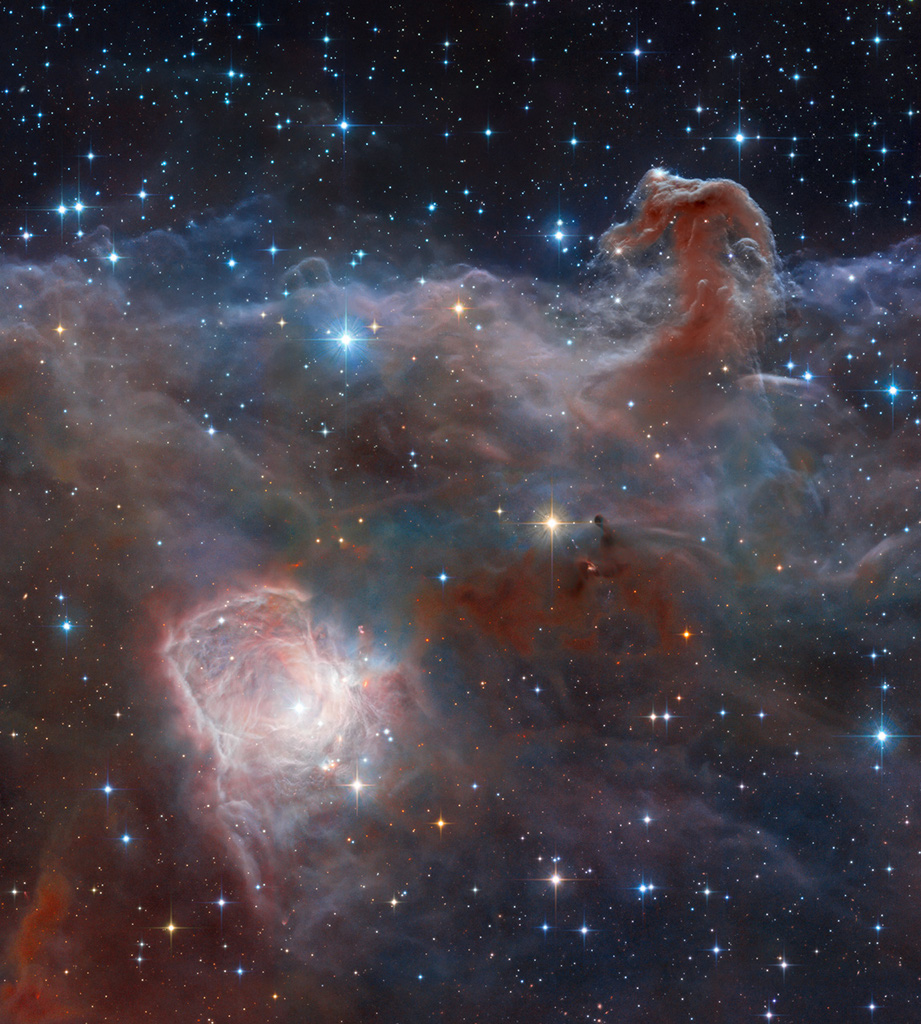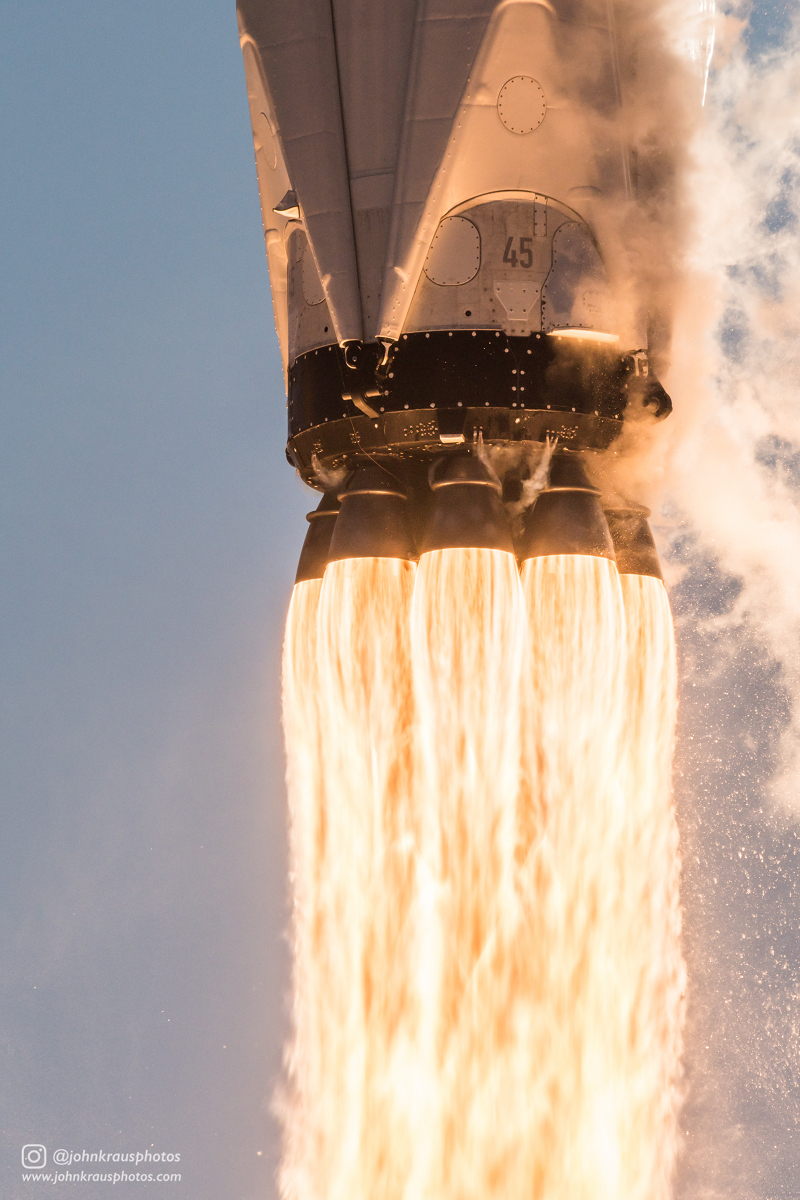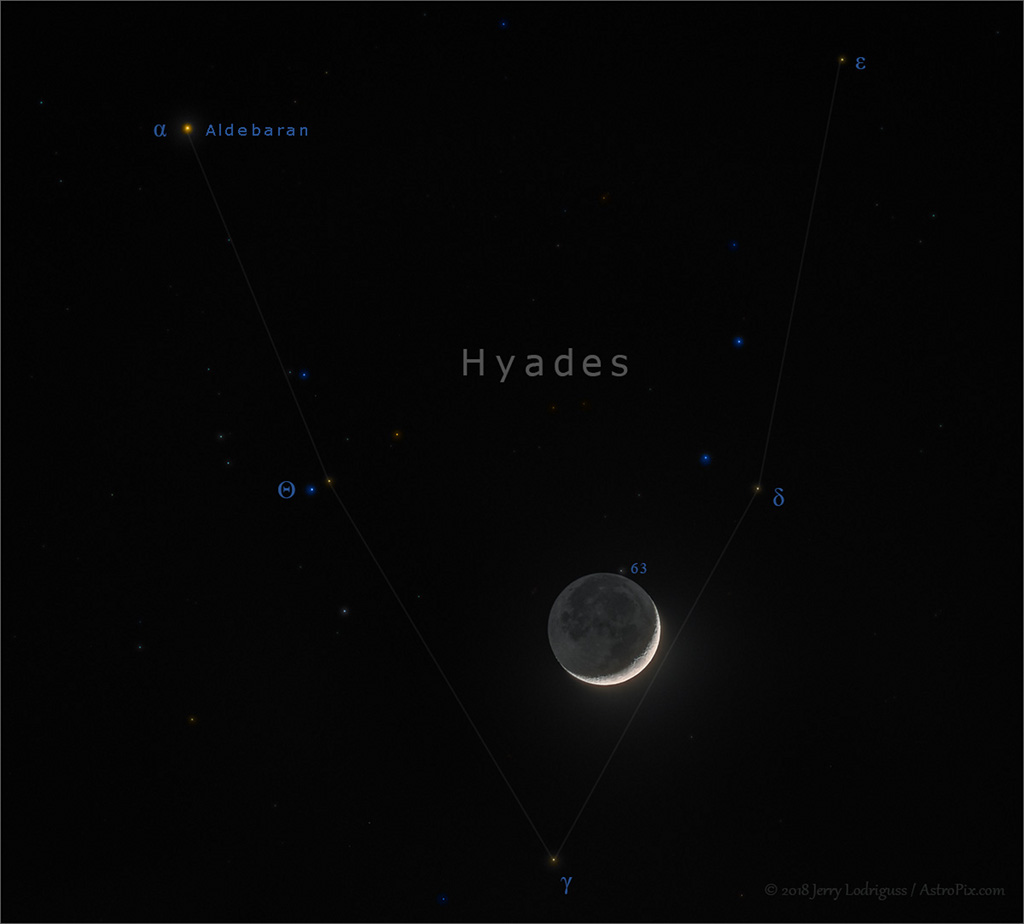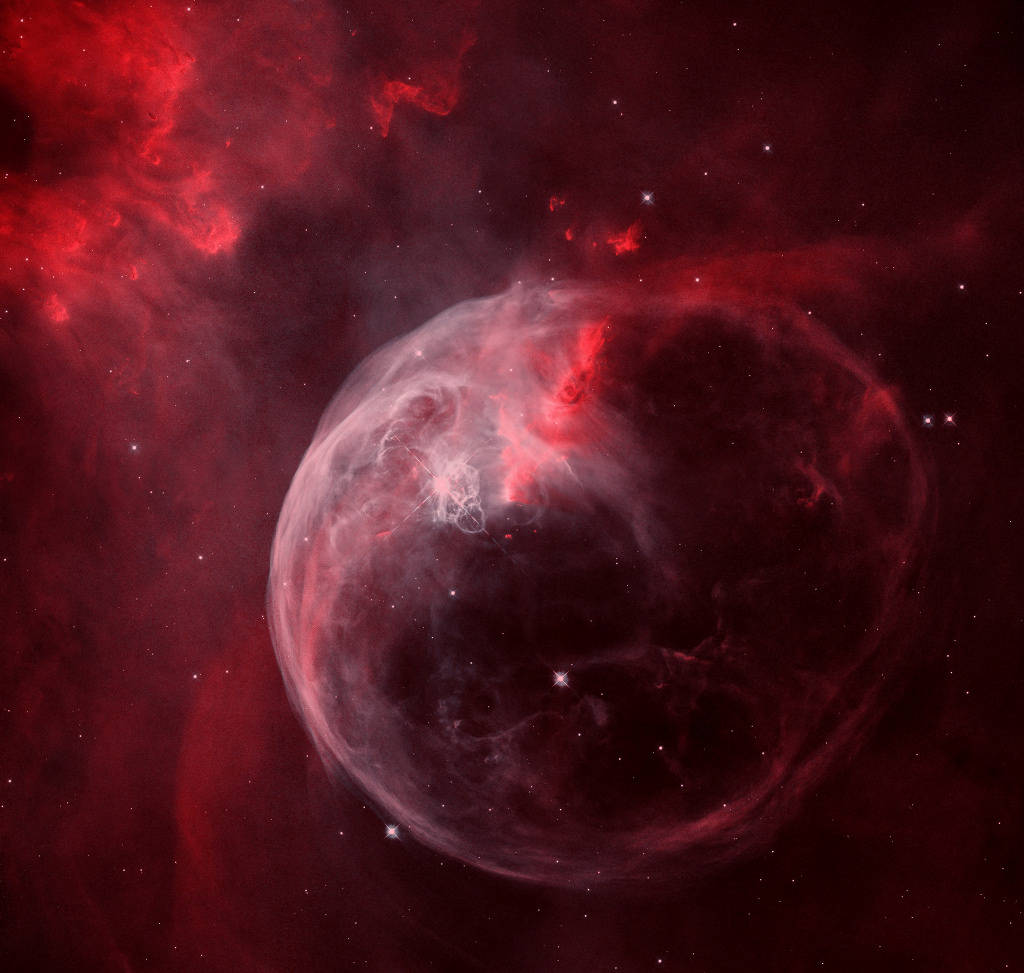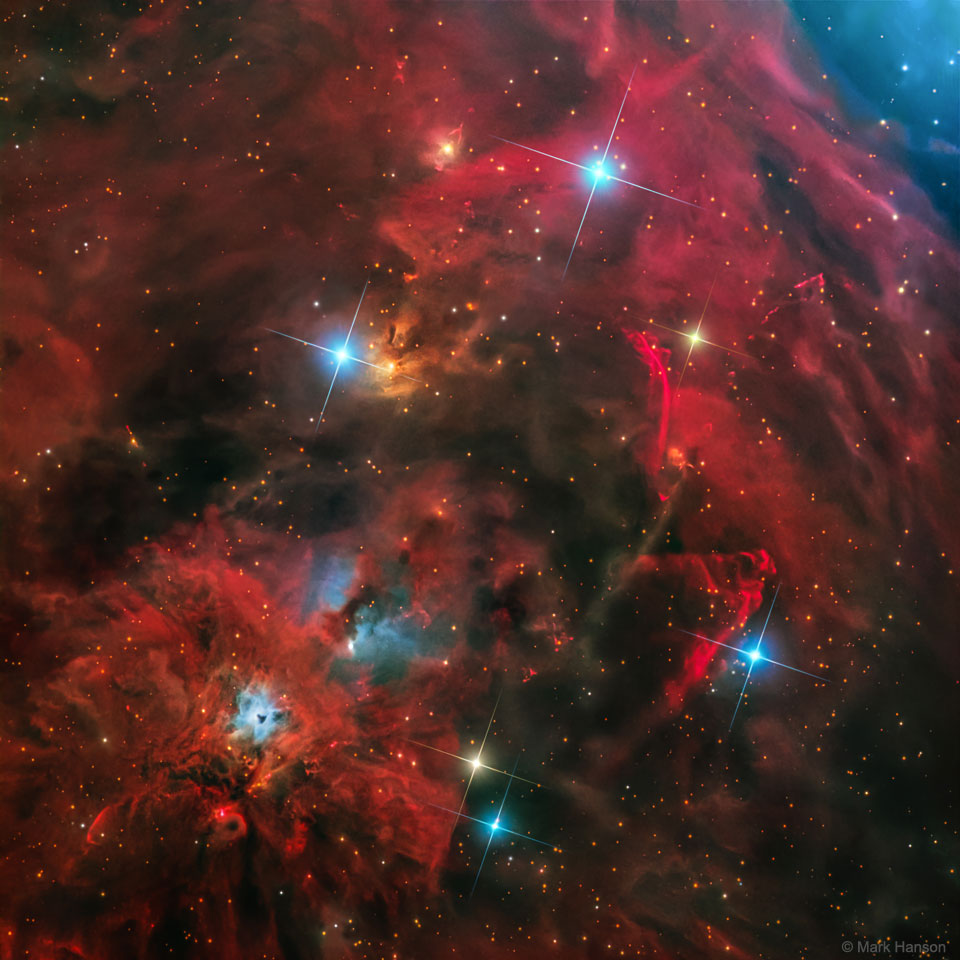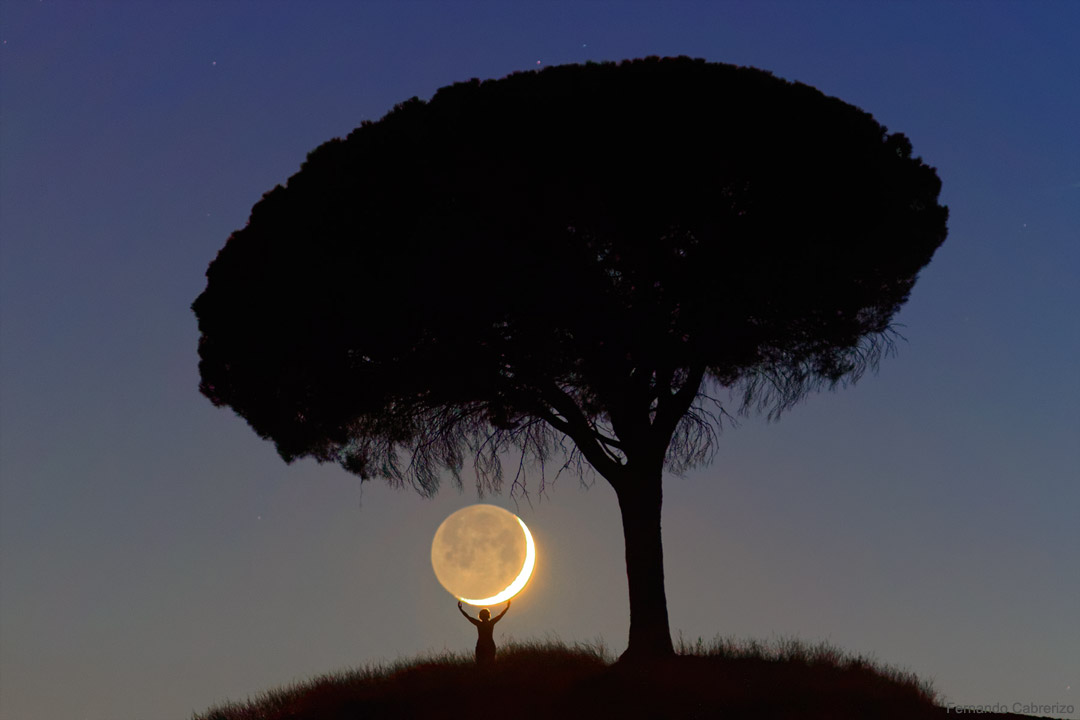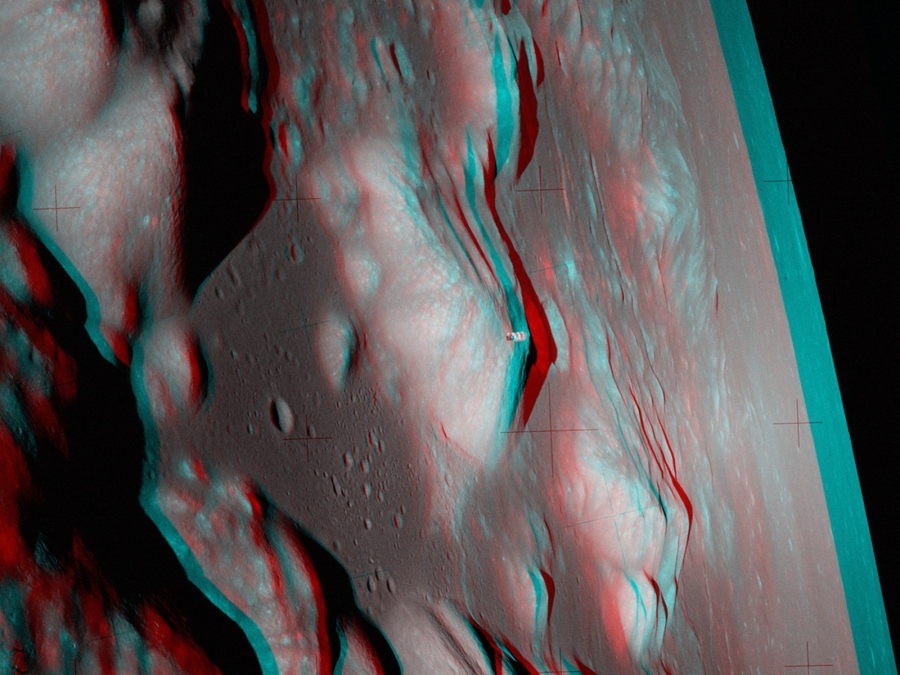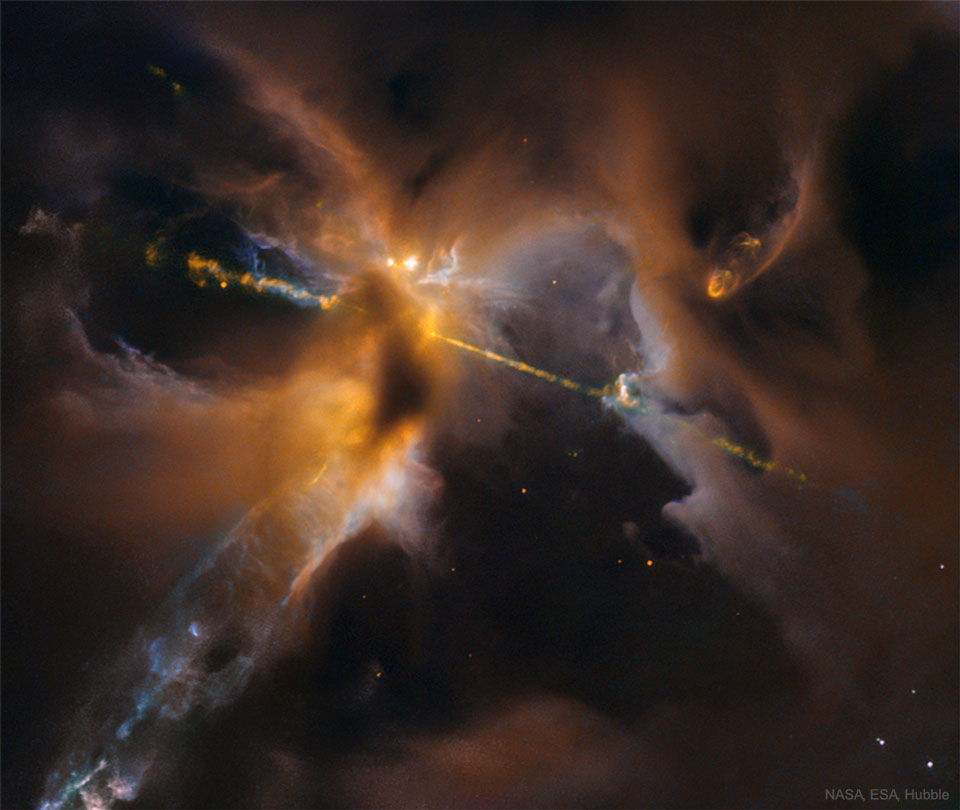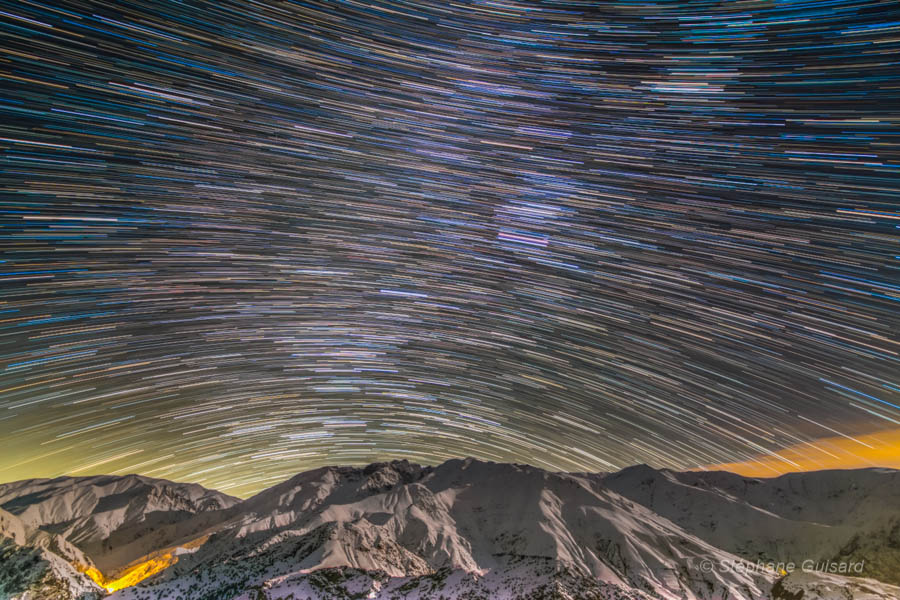| Title: NASA pics | |
| Grapevine50sRoost > ~GENERAL~ > GENERAL DISCUSSION | Go to subcategory: |
| Author | Content |
|
zxxlyzq
|
|
|
Date Posted:09/03/2018 12:10 PMCopy HTML Composition and Processing: Robert Gendler Image Data: ESO, VISTA, HLA, Hubble Heritage Team (STScI/AURA) Explanation: Combined image data from the massive, ground-based VISTA telescope and the Hubble Space Telescope was used to create this wide perspective of the interstellar landscape surrounding the famous Horsehead Nebula. Captured at near-infrared wavelengths, the region's dusty molecular cloud sprawls across the scene that covers an angle about two-thirds the size of the Full Moon on the sky. Left to right the frame spans just over 10 light-years at the Horsehead's estimated distance of 1,600 light-years. Also known as Barnard 33, the still recognizable Horsehead Nebula stands at the upper right, the near-infrared glow of a dusty pillar topped with newborn stars. Below and left, the bright reflection nebula NGC 2023 is itself the illuminated environs of a hot young star. Obscuring clouds below the base of the Horsehead and on the outskirts of NGC 2023 show the tell-tale far red emission of energetic jets, known as Herbig-Haro objects, also associated with newborn stars. |
|
|
Rockymz
|
Share to:





 #1561
#1561
|
|
Re:NASA pics Date Posted:21/04/2018 5:14 PMCopy HTML Image Credit & Copyright: John Kraus Explanation: NASA's Transiting Exoplanet Survey Satellite (TESS) began its search for planets orbiting other stars by leaving planet Earth on April 18. The exoplanet hunter rode to orbit on top of a Falcon 9 rocket. The Falcon 9 is so designated for its 9 Merlin first stage engines seen in this sound-activated camera close-up from Space Launch Complex 40 at Cape Canaveral Air Force Station. In the coming weeks, TESS will use a series of thruster burns to boost it into a high-Earth, highly elliptical orbit. A lunar gravity assist maneuver will allow it to reach a previously untried stable orbit with half the orbital period of the Moon and a maximum distance from Earth of about 373,000 kilometers (232,000 miles). From there, TESS will carry out a two year survey to search for planets around the brightest and closest stars in the sky. |
|
|
Rockymz
|
Share to:





 #1562
#1562
|
|
Re:NASA pics Date Posted:20/04/2018 7:08 AMCopy HTML |
|
|
Rockymz
|
Share to:





 #1563
#1563
|
|
Re:NASA pics Date Posted:19/04/2018 7:59 AMCopy HTML |
|
|
Rockymz
|
Share to:





 #1564
#1564
|
|
Re:NASA pics Date Posted:18/04/2018 7:46 AMCopy HTML |
|
|
Rockymz
|
Share to:





 #1565
#1565
|
|
Re:NASA pics Date Posted:17/04/2018 8:15 AMCopy HTML |
|
|
Rockymz
|
Share to:





 #1566
#1566
|
|
Re:NASA pics Date Posted:14/04/2018 6:53 PMCopy HTML Image Credit & Copyright: Mark Hanson; Annotation: Sakib Rasool (StarSurfin) Explanation: This tantalizing array of nebulas and stars can be found about two degrees south of the famous star-forming Orion Nebula. The region abounds with energetic young stars producing jets and outflows that push through the surrounding material at speeds of hundreds of kilometers per second. The interaction creates luminous shock waves known as Herbig-Haro (HH) objects. For example, the graceful, flowing arc just right of center is cataloged as HH 222, also called the Waterfall Nebula. Seen below the Waterfall, HH 401 has a distinctive cone shape. The bright bluish nebula below and left of center is NGC 1999, a dusty cloud reflecting light from an embedded variable star. The entire cosmic vista spans over 30 light-years, near the edge of the Orion Molecular Cloud Complex some 1,500 light-years distant. |
|
|
Rockymz
|
Share to:





 #1567
#1567
|
|
Re:NASA pics Date Posted:12/04/2018 9:01 AMCopy HTML |
|
|
Rockymz
|
Share to:





 #1568
#1568
|
|
Re:NASA pics Date Posted:22/03/2018 11:06 AMCopy HTML Image Credit: Gene Cernan, Apollo 17, NASA; Anaglyph by Patrick Vantuyne |
|
|
zxxlyzq
|
Share to:





 #1569
#1569
|
|
Re:NASA pics Date Posted:19/03/2018 11:08 AMCopy HTML Image Credit: Dbachmann, Wikipedia Explanation: It is considered the oldest known illustration of the night sky. But what, exactly, does it depict, and why was it made? The Nebra sky disk was found with a metal detector in 1999 by treasure hunters near Nebra, Germany, in the midst of several bronze-age weapons. The ancient artifact spans about 30 centimeters and has been associated with the Unetice culture that inhabited part of Europearound 1600 BC. Reconstructed, the dots are thought to represent stars, with the cluster representing the Pleiades, and the large circle and the crescent representing the Sun and Moon. The purpose of the disk remains unknown -- hypotheses including an astronomical clock, a work of art, and a religious symbol. Valued at about $11 million, some believe that the Nebra sky disk is only one of a pair, with the other disk still out there waiting to be discovered. |
|
|
zxxlyzq
|
Share to:





 #1570
#1570
|
|
Re:NASA pics Date Posted:18/03/2018 11:20 AMCopy HTML <iframe width="960" height="540" src="https://www.youtube.com/embed/sNUNB6CMnE8" frameborder="0" allow="autoplay; encrypted-media" allowfullscreen></iframe>
|
|
|
zxxlyzq
|
Share to:





 #1571
#1571
|
|
Re:NASA pics Date Posted:18/03/2018 11:14 AMCopy HTML |
|
|
zxxlyzq
|
Share to:





 #1572
#1572
|
|
Re:NASA pics Date Posted:11/03/2018 11:11 AMCopy HTML Image Credit: NASA, ESA, Hubble Heritage (STScI/AURA)/Hubble-Europe Collaboration; Acknowledgment: D. Padgett (NASA's GSFC), T. Megeath (U. Toledo), B. Reipurth (U. Hawaii) Explanation: This might look like a double-bladed lightsaber, but these two cosmic jets actually beam outward from a newborn star in a galaxy near you. Constructed from Hubble Space Telescope image data, the stunning scene spans about half a light-year across Herbig-Haro 24 (HH 24), some 1,300 light-years away in the stellar nurseries of the Orion B molecular cloud complex. Hidden from direct view,HH 24's central protostar is surrounded by cold dust and gas flattened into a rotating accretion disk. As material from the disk falls toward the young stellar object it heats up. Opposing jets are blasted outalong the system's rotation axis. Cutting through the region's interstellar matter, the narrow, energetic jets produce a series of glowing shock fronts along their path. |
|
|
Rockymz
|
Share to:





 #1573
#1573
|
|
Re:NASA pics Date Posted:10/03/2018 4:50 PMCopy HTML Image Credit & Copyright: Stéphane Guisard (Los Cielos de America, TWAN) Explanation: Colourful star trails arc through the night in this wide-angle mountain and skyscape. From a rotating planet, the digitally added consecutive exposures were made with a camera fixed to a tripod and looking south, over northern Iran's Alborz Mountain range. The stars trace concentric arcs around the planet's south celestial pole, below the scene's rugged horizon. Combined, the many short exposures also bring out the pretty star colours. Bluish trails are from stars hotter than our Sun, while yellowish trails are from cooler stars. Near the center, the remarkably pinkish trail was traced by the star-forming Orion Nebula. |
|
|
zxxlyzq
|
Share to:





 #1574
#1574
|
|
Re:NASA pics Date Posted:10/03/2018 3:22 PMCopy HTML Glad you like them if you want to see more go to https://apod.nasa.gov/apod/archivepix.html and you can look through 25 years of pics. I will be posting one that grab me here so if you don't see one for a day or so you can go to the site and see them.
|
|
|
Rockymz
|
Share to:





 #1575
#1575
|
|
Re:NASA pics Date Posted:10/03/2018 11:11 AMCopy HTML Image Credit & Copyright: Xiaohan Wang Explanation: Why would the sky glow like a giant repeating rainbow? Airglow. Now air glows all of the time, but it is usually hard to see. A disturbance however -- like an approaching storm -- may cause noticeable rippling in the Earth's atmosphere. These gravity waves are oscillations in air analogous to those created when a rock is thrown in calm water. Red airglow likely originates from OH molecules about 87-kilometers high, excited by ultraviolet light from the Sun, while orange and green airglow is likely caused by sodium and oxygen atoms slightly higher up. While driving near Keluke Lake in Qinghai Provence in China, the photographer originally noticed mainly the impressive central band of the Milky Way Galaxy. Stopping to photograph it, surprisingly, the resulting sensitive camera image showed airglow bands to be quite prominent and span the entire sky. The featured image has been digitally enhanced to make the colors more vibran |
|
|
claremorgan8
|
Share to:





 #1576
#1576
|
|
Re:NASA pics Date Posted:10/03/2018 5:57 AMCopy HTML Stunning photo Chris, thanks for sharing
|
|
|
Rockymz
|
Share to:





 #1577
#1577
|
|
Re:NASA pics Date Posted:09/03/2018 7:14 PMCopy HTML Wow fascinating Chris thank you for posting this |





